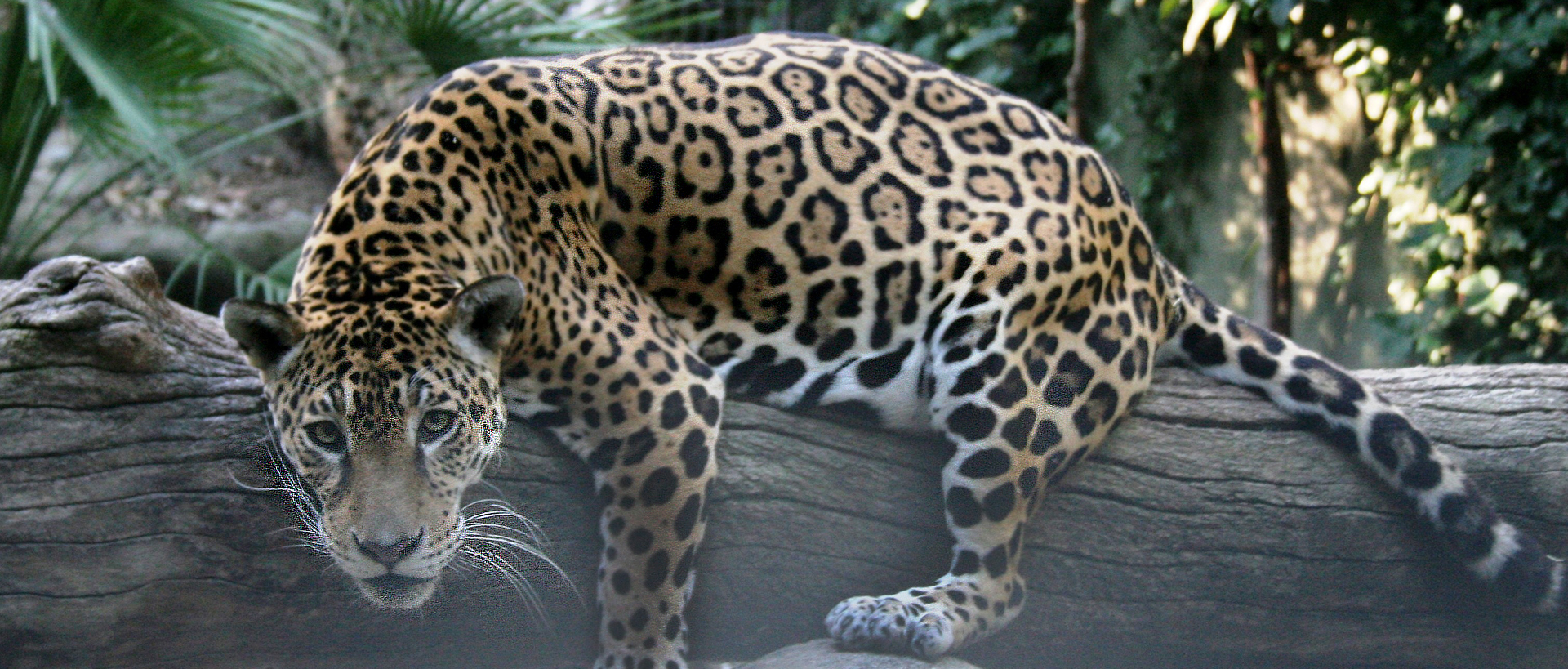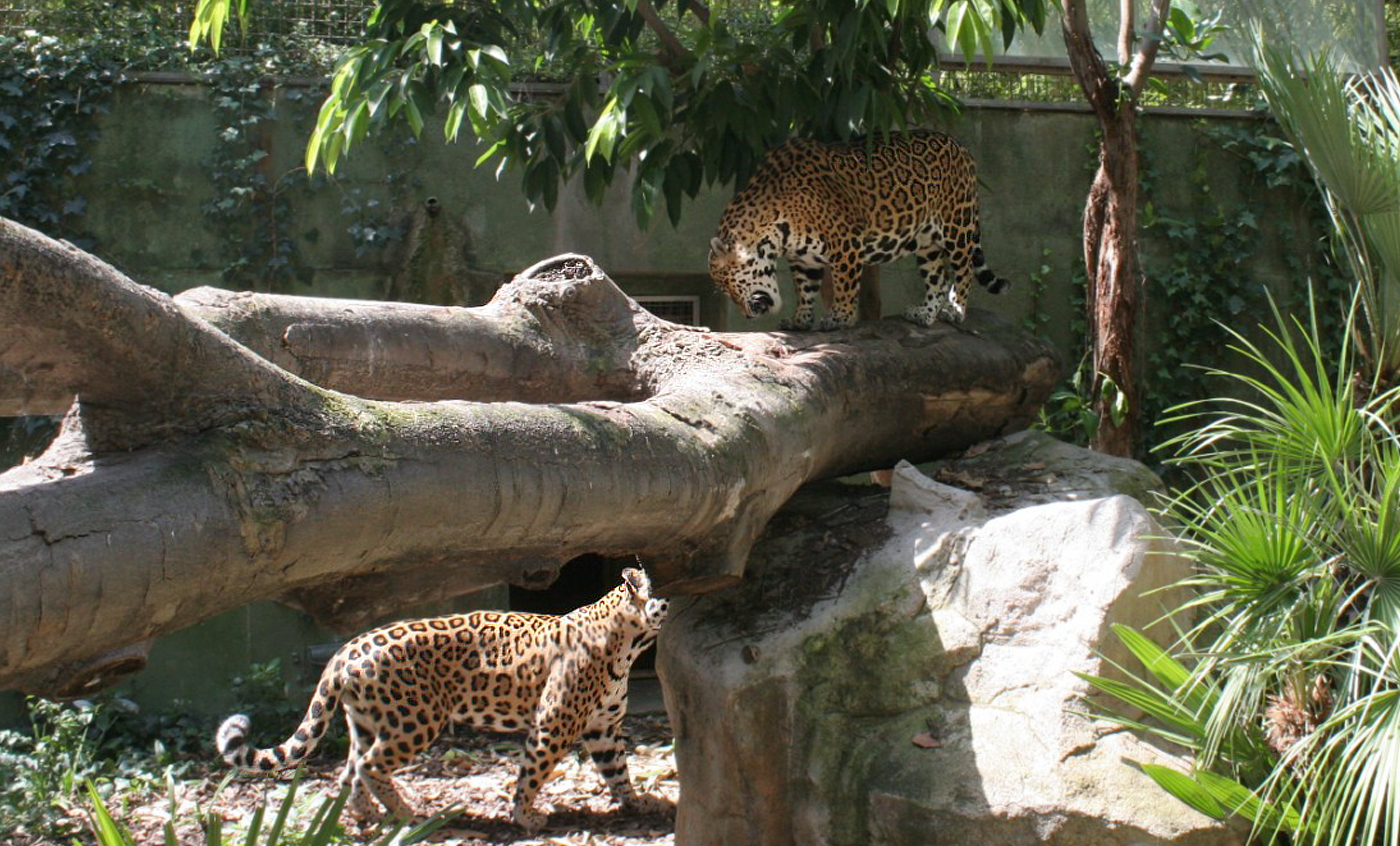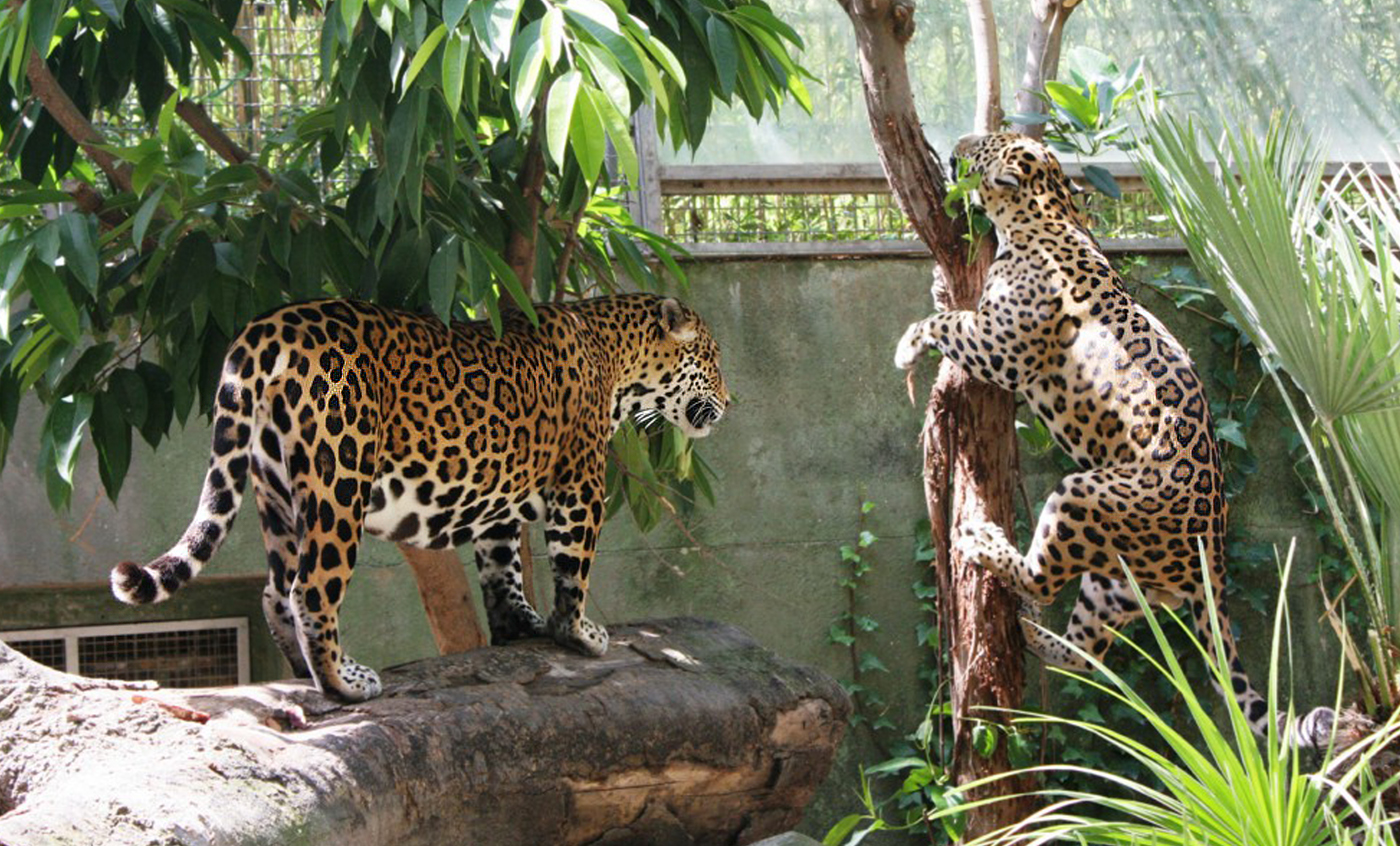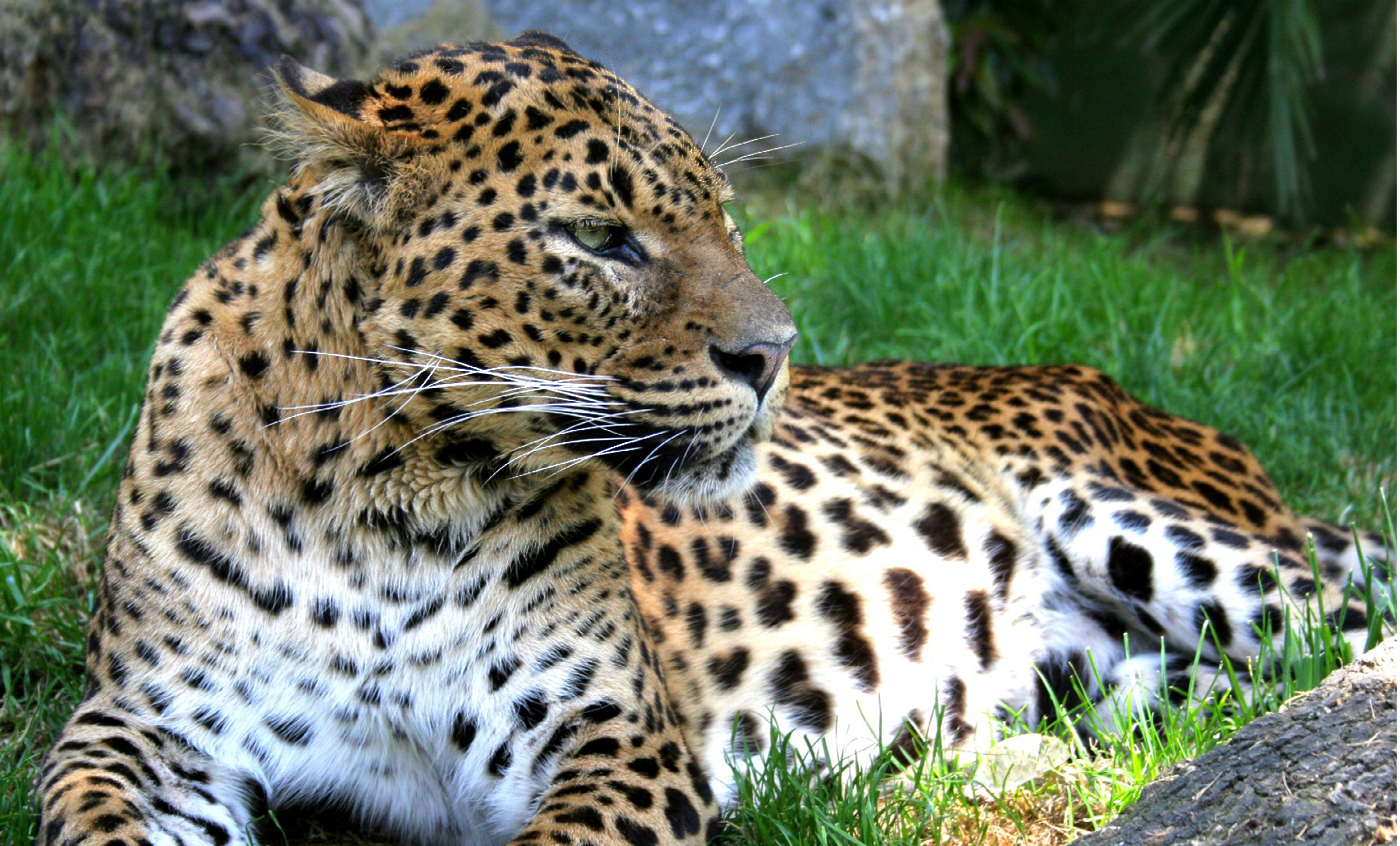Jaguar
The jaguar is the largest feline of the American continent, in whose tropical rainforests it lives. It is a great predator that does not spare any kind of prey. It is notably aquatic and it captures, apart from fish, big snakes such as the anaconda.
As in many felines, it has been decimated, as a result of the trade of its skin. Its habits are quite nocturnal and solitary, and can move in very wide territories. As in leopards, some individuals are melanistic, completely black.
Breeding program
Natural habit
From southern USA and Mexico, through Central and South America, up to northern Argentina.
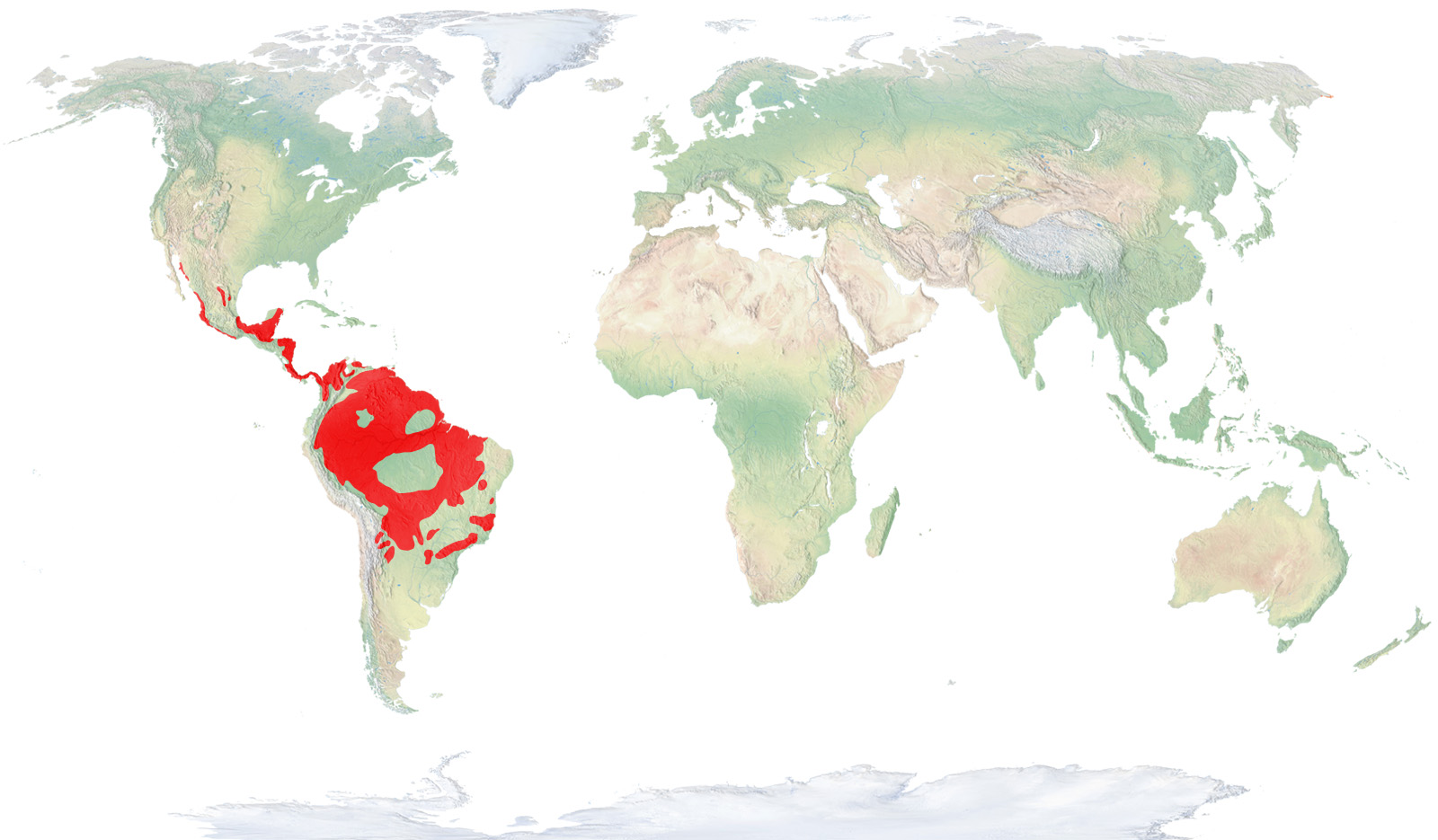
- Distribution / Resident
- Breeding
- Wintering
- Subspecies
Risk level
- Extint
- Extint in the wild
- Critically endangered
- In Danger
- Vulnerable
- Near threatened
- Minor concern
- Insufficient data
- Not evaluated
Taxonomy
Physical characteristics
Biology
Reproduction
Biology
It is the largest feline of the American continent, as it can weight more than 100 kg. Its coat is covered by spots, specially resembling the leopard, albeit bigger, with a general hefty constitution and more robust head, with general behavioural and habitat characteristics closer to the tiger’s.
Although its preferred habitats are dense or swamp rainforests with abundant vegetation, the jaguar can live in a variety of more open forest areas, always near an easily accessible source of water.
It is a powerful predator that does not spare any kind of prey, although it prefers mammals such as deer, tapirs, peccaries, capybaras, agoutis and monkeys. It is notably aquatic and it can capture fishes in the riverside or from a low branch. Often, it also captures caimans, big snakes such as the anaconda, birds, turtles and its eggs. On occasion it also eats ripe fruit.
They are solitary animals and both sexes only get together during oestrus, that can last for fifteen days, during which quick and frequent copulations are produced. Gestation lasts for 93 to 105 days, and one to four cubs are born each time, usually a couple. They are looked after exclusively by the mother, for almost two years.
Its habits are rather nocturnal and it is a solitary animal, except during reproduction. Each individual occupies a territory of 5 to 5002, according to prey availability. Females can overlap their territories, which are smaller than males’. Jaguars mark their territories with urine, faeces, by scratching trees and with vocalizations.
It is an able swimmer and a good climber that nimbly moves on the branches of trees, although it usually captures its preys on the ground.
As in leopards, the presence of melanistic individuals is frequent, that is, with completely black fur, especially in the populations living in dense rainforests.
Except for some reduced areas, such as Pantanal, an extensive wet area with little human presence, shared between Brazil, Bolivia and Paraguay, the jaguar populations are endangered in all of its distribution area. During the last decades, the territory occupied by the northern races of this species has been reduced in two thirds, while the southern races, in more than one third. The causes of such strong decrease are excessive hunting for its highly valued skin and the destruction of its habitat.
The Zoo of Barcelona takes part in the ESB of this species.



